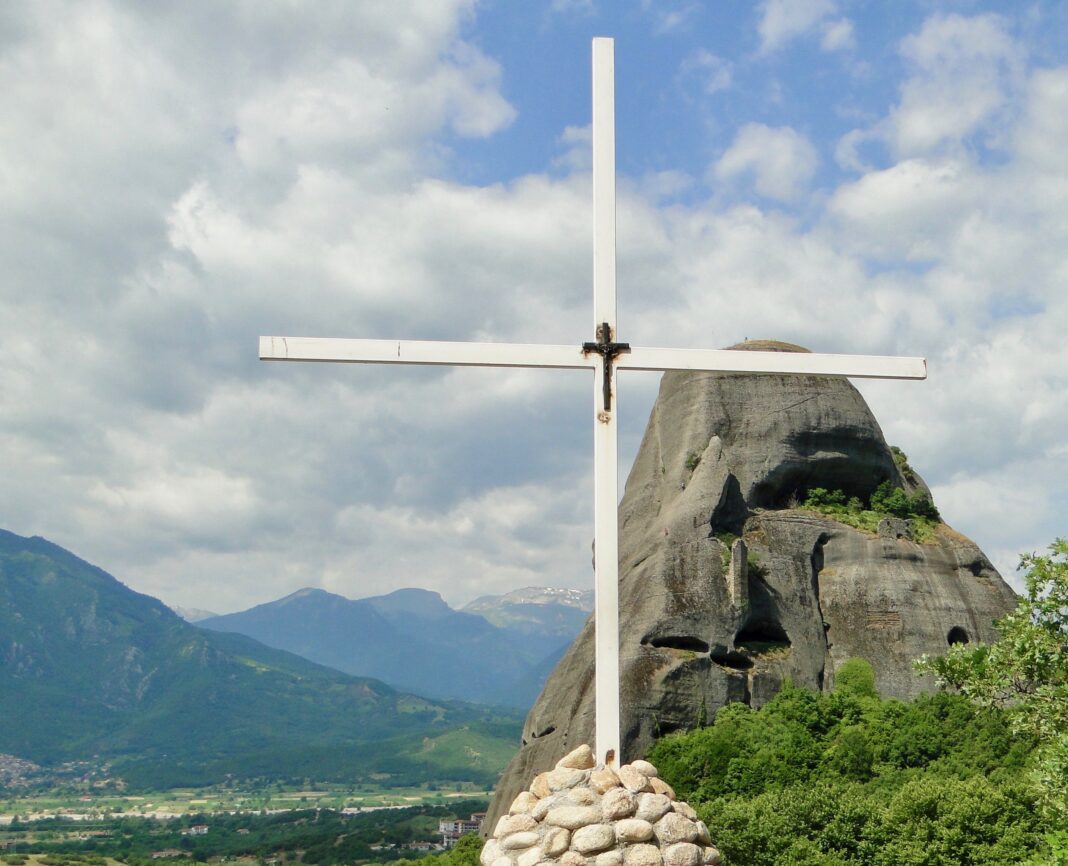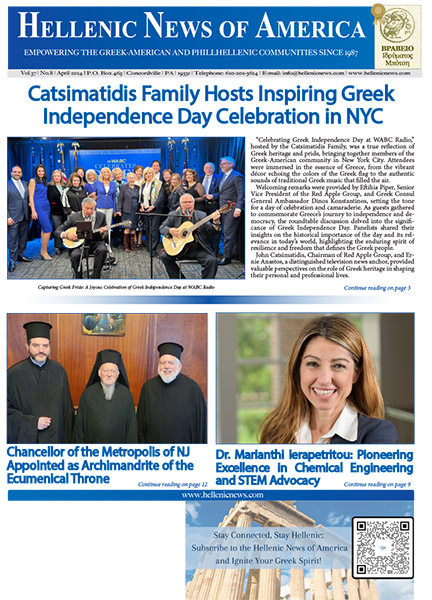The six monasteries of Meteora are justifiably a magnet for tourists. The ascetic Greek Orthodox monks who strove for mystical connection with the divine are a past memory. Gone is the serenity that once made this the second holiest enclave in the Orthodox world; Meteora now exists for bus tours.
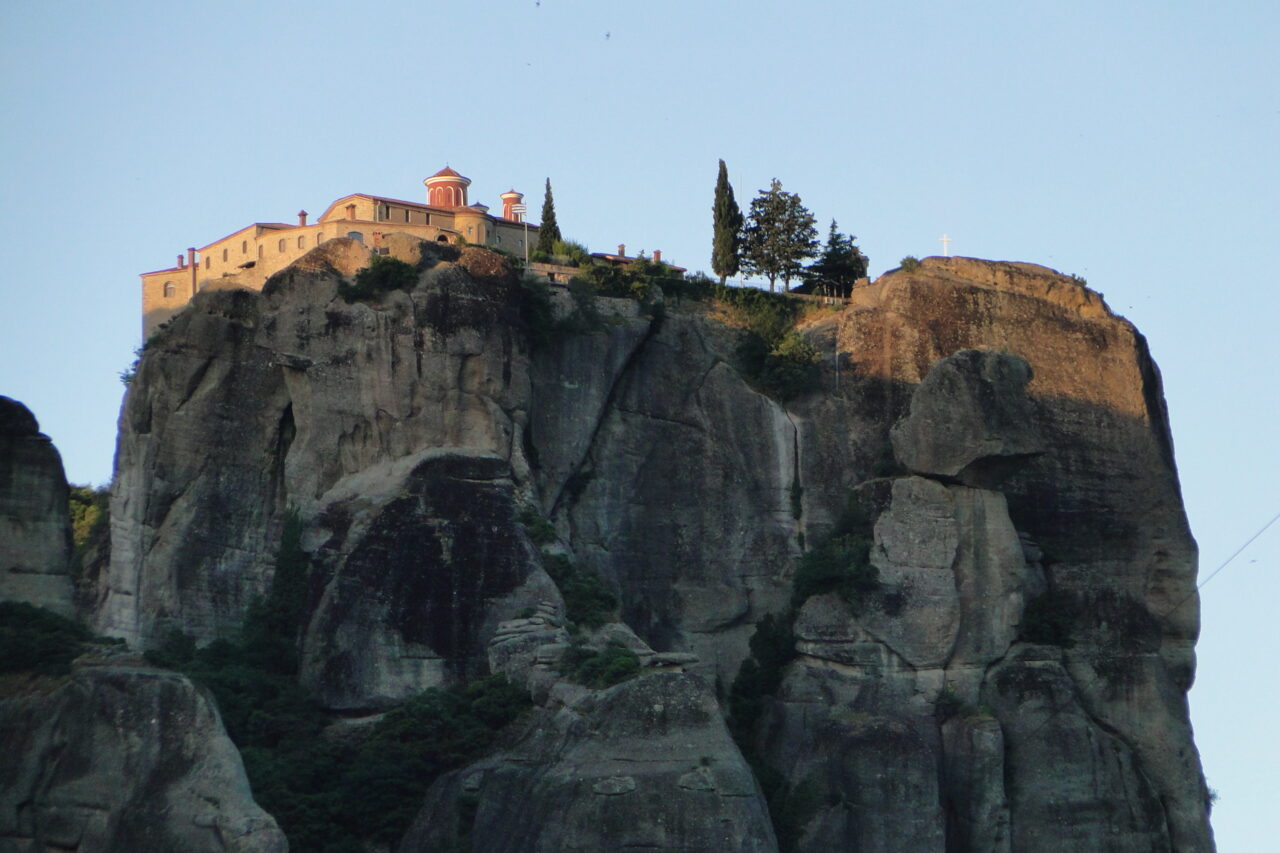
The few monks one sees are detached as they sell tickets to tour the stunning architecture set in this unique lush countryside. They could not have envisioned that their chosen life of contemplation would thrust them into the international tourism spotlight. I am not trying to be harsh; it’s my gut reaction, but then the historical connection for the very existence of the region created a mental photo of realities.
Meteora is a photographer and rock climber’s paradise. Massive pillars of sandstone grow out of the fertile soil of the Plain of Thessaly. Half a dozen equally massive humanly-built structures bloom precariously high atop the cliff sides and plateaus at the summits. One cannot help but gape at these engineering marvels.
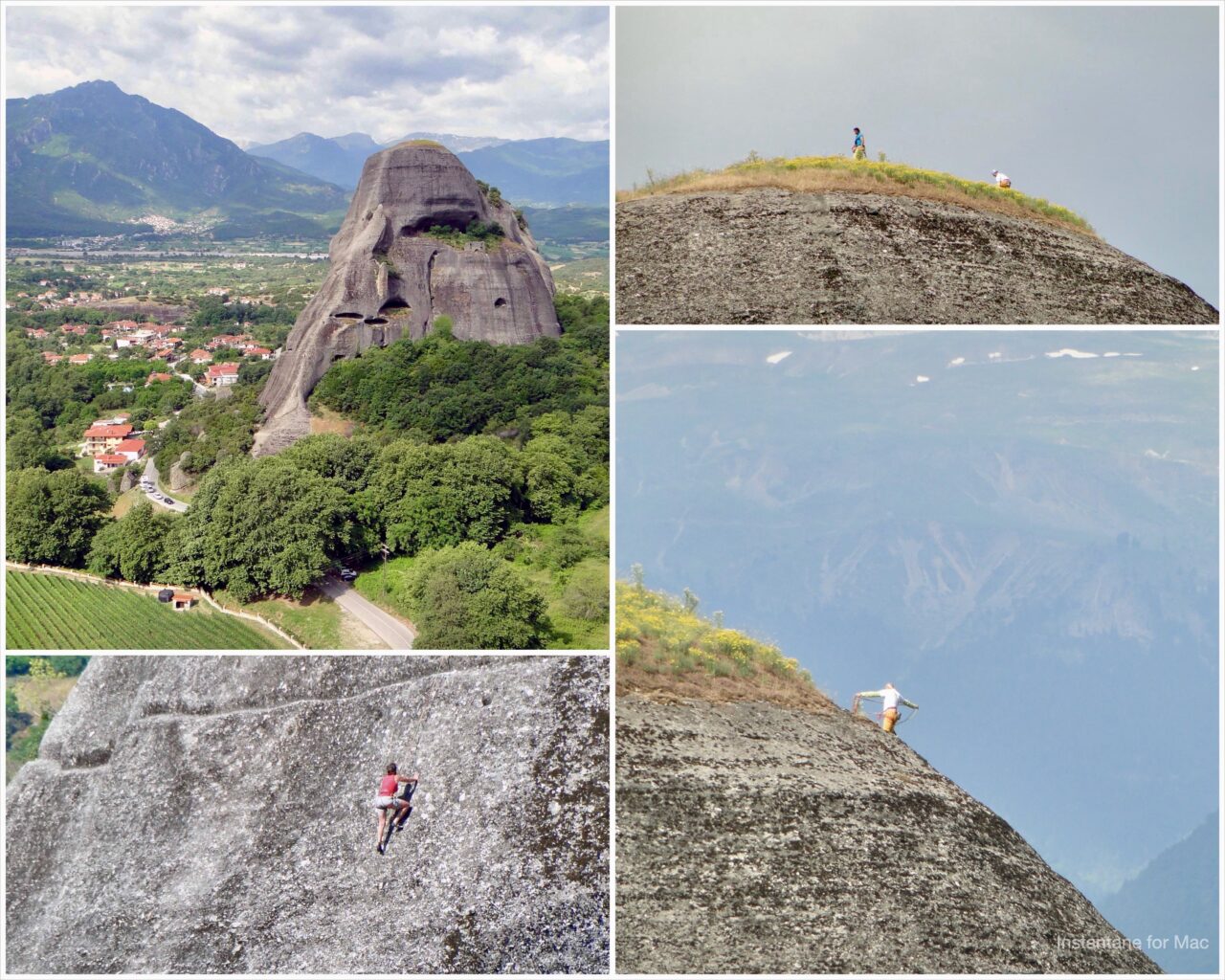
Even in the 21st century accessing these living museums requires planning. There is no shortage of knowledgeable taxi/tour drivers and bus companies to provide visitors transportation to the monasteries. It is possible to hike or bike from the town of Kalabaka depending on your physical stamina. The region is a mecca for extreme sports enthusiasts; climbers cling to massive vertical rock walls as if lizards.
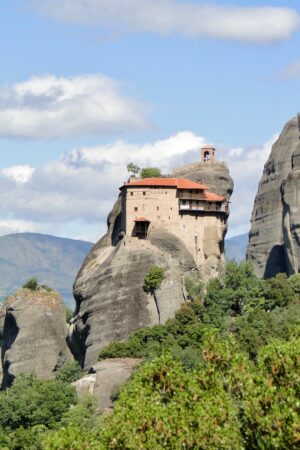
Yet if it’s a metaphysical experience one is looking for Meteora’s monasteries offers it only within your imagination. With a handful, literally, of monks and nuns occupying the six remaining monasteries a visitor’s insights for discovering the magic that once inspired thousands in seeking a hermit-like life-style is available only from the vendors of refrigerator tags, tour guides or the expensive gift shops just beyond the (modestly priced) ticket booths.
The magnificent architecture offers the best insights. Centuries old frescos illuminate the interiors. Gardens spill down the cliff sides. Terraces offer amazing vistas of the landscape and the Pindus Mountains.
Of the original twenty-four built between the 14th and 16th centuries, six remain today. Five are open to the public (schedules vary) (1) St. Nicholas (2) Great Meteora (3) Varlaam (4) St. Stephens (5) Rousanou/St. Barbara with one, Holy Trinity, closed for renovation.
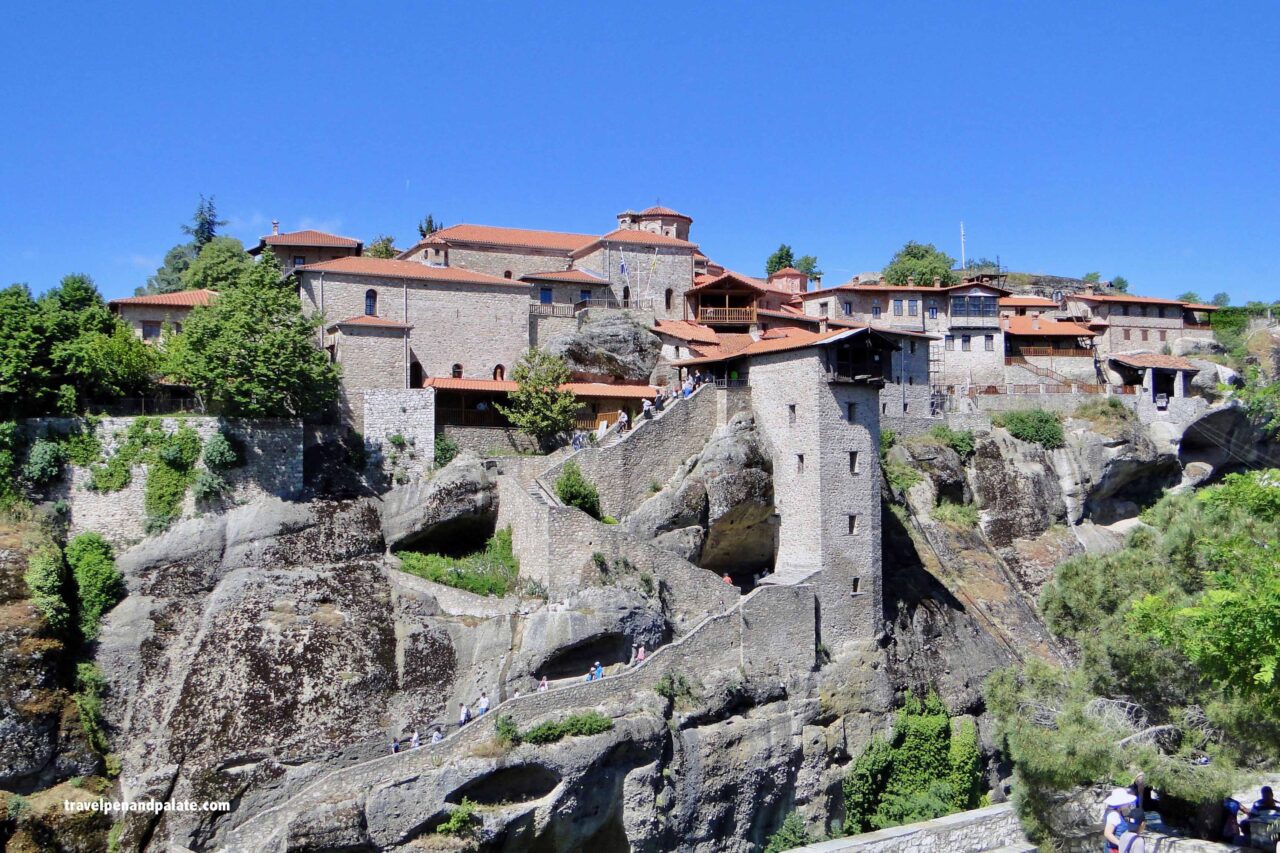
These structures were built to enhance isolation. The sandstone pillars and surrounding hills are peppered with caves that were occupied for thousands of years since pre-historic days.
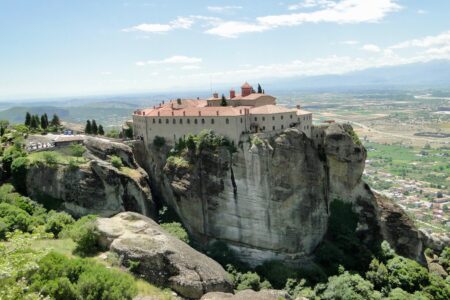
Ironically, there is little mention of this fascinating natural treasure in classical Greek times. Yet Mt. Olympus lies within Thessaly. Mt. Athos in Macedonia has a rich history from both the age of the Pantheon to today’s most sacred monastic site of the Greek Orthodox Church.
It wasn’t until the 11th century that the caves of Meteora became a haven for hermit monks seeking solitude to contemplate the divine. Yet it was war that fostered the building of the fortress-like monasteries. Fear in the 14th century over the expanding power of the Ottoman Empire and Islam was the driving force.
Access to the monasteries was deliberately difficult. A system of long ladders, which were drawn up whenever the monks felt threatened, ropes pulling nets and primitive cable cars ferried people and supplies from the valley floor. It was only in the 1920s that the stone steps used today were carved into the hillsides although improved cable cars are still in use for workers, building materials and food.
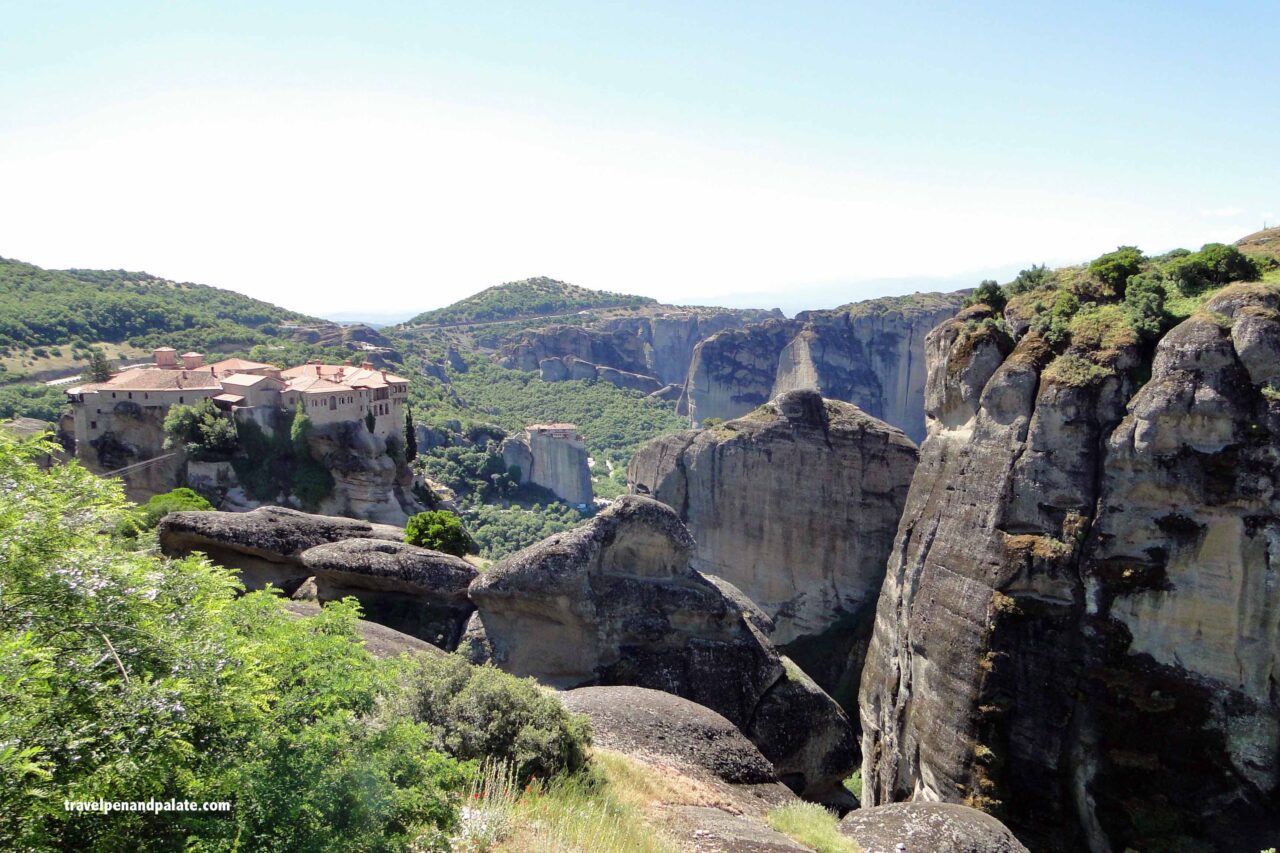
It was the violence of the 20th century – World Wars I and II and the Greek Civil War – that drastically altered Meteora’s monastic culture. The resulting turmoil directly led to the demise of all but six of the 24 monasteries. It was tourism, and a UNESCO World Heritage Site designation, that has preserved what remains.
Kalabaka (aka: Kalambaka, Kalampáka) spreads out among the rocks and along the lush valley floor. The rock formations of Meteora provide an enviable backdrop for the cafes, shops and accommodations that pepper the squares. The town offers all a tourist needs for a comfortable visit and is a transportation hub for planning all-season trips to the nearby ski center of Metsovo and exploring Epirus and Thessaly. For those who identify Greece only by its islands or Athens, the north of this complex ancient country holds many surprises for the international visitor seeking lesser-known destinations.
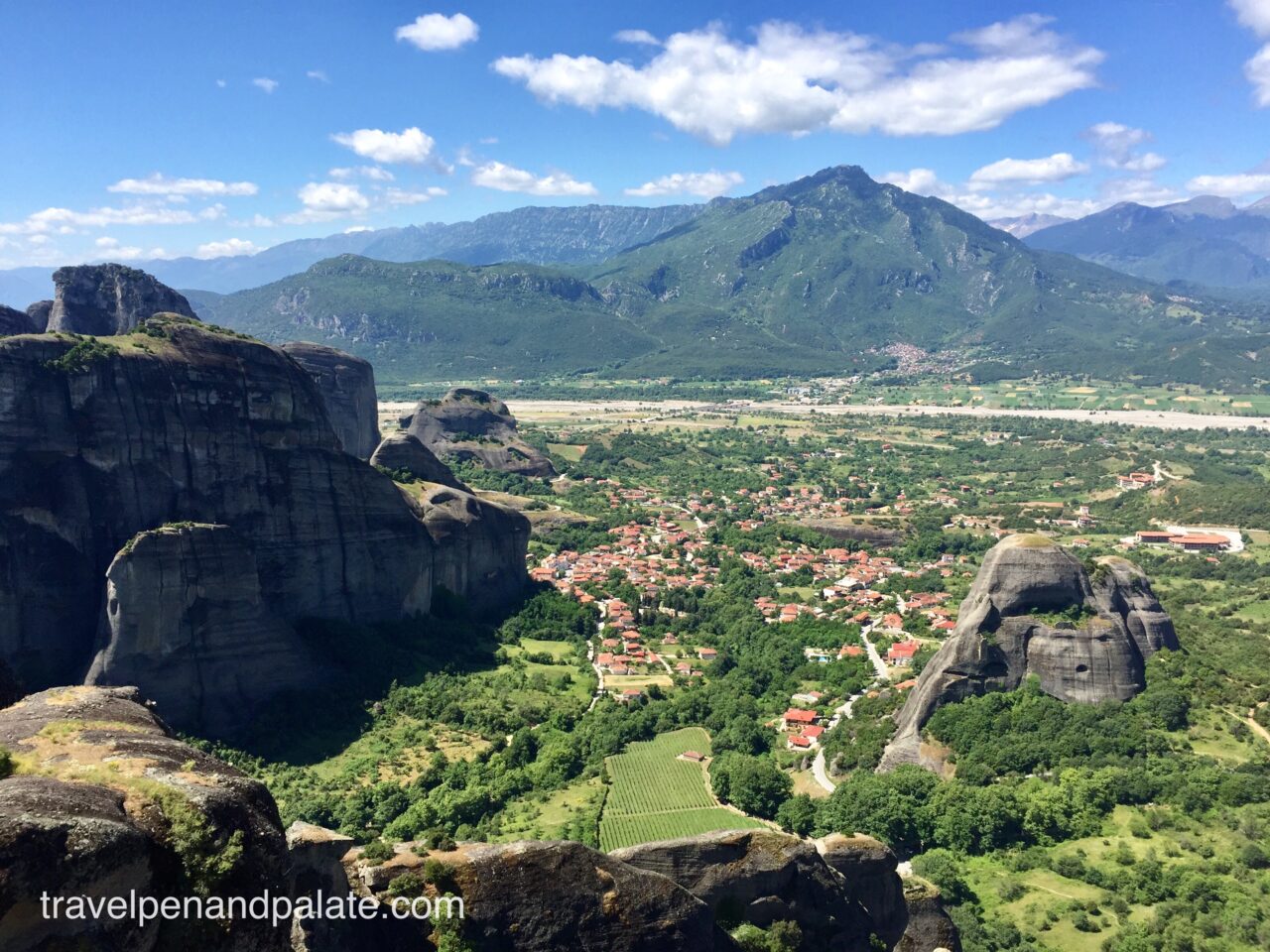
When you go: Kalabaka is easily reached by car, coach bus or train from both Athens and Thessaloniki. A number of attractive accommodations are to be found. I stayed at the comfortable and quiet Kastelia Guest House. Cafes and tavernas abound. I did not find any that particularly stood out among others. Wander and choose a menu at any number of attractive locations.
Travel with Pen and Palate every month to Greece and the world in the Hellenic News of America





